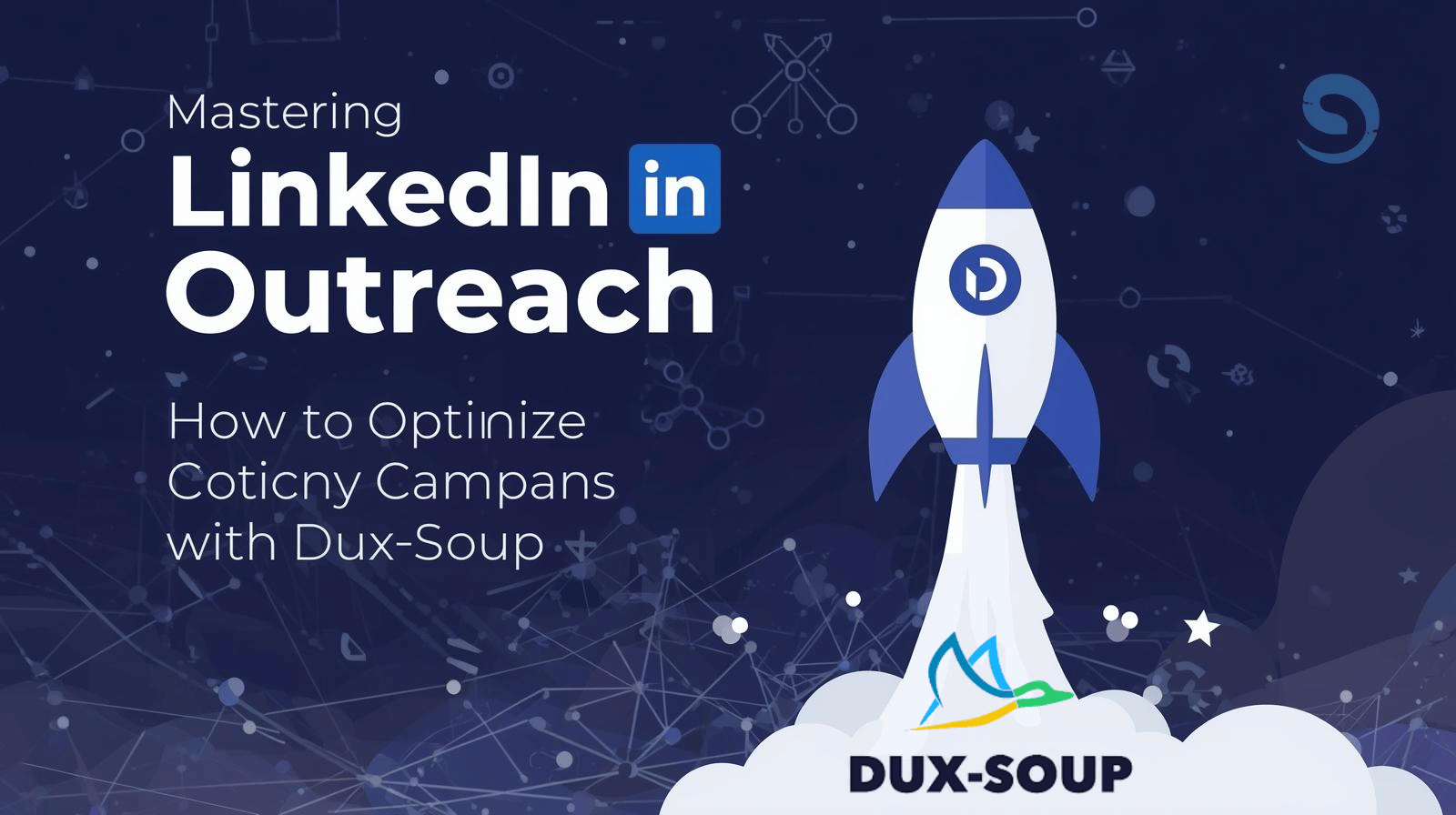Introduction: The Power of LinkedIn Outreach
LinkedIn has become the number one platform for B2B lead generation. It’s where professionals network, decision-makers hang out, and businesses discover opportunities. But here’s the challenge: outreach on LinkedIn can be time-consuming, repetitive, and often inefficient if done manually.
That’s where Dux-Soup comes in. As one of the most popular LinkedIn automation tools, Dux-Soup helps you scale your outreach without sacrificing personalization. However, like any tool, the results depend on how you use it. With the right strategy, you can double—or even triple—your response rates.
👉 In this blog, we’ll break down how to build and optimize your LinkedIn outreach campaigns using Dux-Soup.
Why Use Dux-Soup for LinkedIn Outreach?
Before jumping into strategies, let’s quickly cover what makes Dux-Soup so powerful for outreach:
-
Automated Connection Requests: Send personalized invites at scale.
-
Follow-Up Campaigns: Set up multi-step messaging sequences that continue conversations automatically.
-
Profile Visits & Engagement: Auto-view profiles, endorse skills, or follow people—building visibility before outreach.
-
Lead Management: Tag, categorize, and export leads for CRM integration.
-
Time Savings: Free up hours every week that you can spend closing deals instead of manually sending invites.
In short: automation + personalization = efficient outreach at scale.
Step 1: Define Your Target Audience
The first step in any successful campaign is knowing exactly who you want to reach. Sending generic messages to everyone will only hurt your LinkedIn reputation.
-
Use LinkedIn Sales Navigator or advanced search filters to build your prospect list.
-
Narrow down by industry, job title, company size, or region.
-
Export or save these leads, then upload them to your Dux-Soup campaign.
🎯 Pro Tip: Smaller, more targeted lists often perform better than massive broad ones. Quality over quantity wins in LinkedIn outreach.
Step 2: Personalize Your Connection Requests
Nothing kills outreach faster than a boring “I’d like to add you to my professional network.” Dux-Soup allows you to add personalized notes to connection requests.
Examples:
✅ “Hi Sarah, I noticed you also work in SaaS growth. I’d love to connect and exchange ideas!”
✅ “Hello Mark, I saw your post about digital transformation—very insightful. Let’s connect!”
Keep it short (under 300 characters), genuine, and specific to the person’s role or activity.
Step 3: Build a Multi-Step Follow-Up Sequence
Here’s where Dux-Soup really shines. Once someone accepts your request, you can trigger a sequence of follow-up messages spaced out over days or weeks.
Suggested structure:
-
Follow-Up #1 (Day 1–2 after acceptance):
-
Thank them for connecting.
-
Share a piece of value (an article, free resource, or quick insight).
-
-
Follow-Up #2 (Day 4–6):
-
Ask a relevant question about their role or industry.
-
Keep it light and conversational.
-
-
Follow-Up #3 (Day 7–10):
-
Gently introduce your solution or service.
-
Add a clear but soft CTA (e.g., “Would you be open to a quick chat next week?”).
-
⚠️ Don’t spam. Each message should feel like a natural continuation, not a hard sales pitch.
Step 4: Stay Within LinkedIn’s Safety Limits
One of the biggest fears with LinkedIn automation is account restriction. The good news: Dux-Soup includes safety features, but you must also play smart.
Best practices:
-
Keep connection requests under 30–50 per day.
-
Use the “random delay” feature to mimic natural human behavior.
-
Don’t copy-paste the same message to thousands of people—always personalize.
Remember, LinkedIn values authentic interactions. Automation should enhance, not replace, your human touch.
Step 5: Track, Measure, and Optimize
What gets measured gets improved. Luckily, Dux-Soup makes it easy to monitor your campaign results.
Key metrics to track:
-
Connection Acceptance Rate (%): How many invites are accepted.
-
Reply Rate (%): How many people respond to your follow-up.
-
Conversion Rate (%): How many conversations turn into calls or deals.
Once you have data, experiment with:
-
Adjusting message tone.
-
Changing CTAs.
-
Segmenting audiences more narrowly.
Small tweaks can lead to big jumps in engagement.
Advanced Tips: Take Dux-Soup Outreach to the Next Level
-
CRM Integration
-
Sync with HubSpot, Pipedrive, or Zoho to keep track of leads.
-
Use tags in Dux-Soup for seamless lead handover to sales teams.
-
-
Zapier & Workflow Automation
-
Trigger automated emails once someone accepts your connection.
-
Add leads directly into your email nurture sequences.
-
-
Cloud Edition
-
Run campaigns 24/7 from the cloud.
-
No need to keep your computer on—perfect for scaling outreach globally.
-
Case Study Example (Optional Section)
Imagine a SaaS startup targeting IT managers. Before using Dux-Soup, they manually sent 50 invites per week and struggled to follow up consistently. After implementing Dux-Soup with a three-step sequence:
-
Connection acceptance jumped from 25% to 48%.
-
Reply rate increased from 10% to 22%.
-
The team booked 5x more discovery calls in just two months.
Proof that when used strategically, Dux-Soup can transform LinkedIn into a lead-generating machine.
Conclusion: Smart Outreach Wins
LinkedIn outreach isn’t about blasting thousands of people with the same message. It’s about building relationships at scale.
With Dux-Soup, you can:
-
Save time.
-
Stay consistent with follow-ups.
-
Personalize at scale.
-
Ultimately, close more deals.
👉 Ready to double your outreach results? Try Dux-Soup today and start turning LinkedIn into your most reliable lead source.

